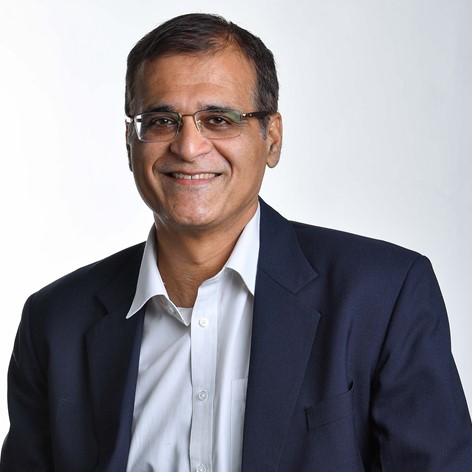'5G is about enhanced mobile broadband, requiring much greater throughput than 3G or 4G.'
According the latest study by GSM Alliance, there would be 670 million 5G subscribers (excluding IoT connections) in Asia Pacific by 2025, or 60 per cent of all 5G connections by then. Frost & Sullivan estimates that 5G service revenue in Asia-Pacific will reach US$4.50 billion by 2022. Some say that Asia Pacific is leading in the race of 5G compared to other parts of the world, with South Korea working towards early deployment of 5G for the PyeongChang Winter Olympics next year, and the Japanese providers have the opportunity to showcase full-fledged 5G at the 2020 Olympics in Tokyo. With no doubt, operators in Asia are actively conducting research and development on 5G. It is said that Asia Pacific operators accounted for four of the six fastest pre-standard 5G lab tests announced to date.
Navin Vohra, Vice President of Wireless Sales at CommScope discusses the progress of 5G development in Asia and how businesses in the region can reap the benefits of 5G. The following is an interview by The Fast Mode with Navin on his views on the topic.
The Fast Mode: Do you think Asia is leading in 5G deployment compared to the rest of the world? Why?

Navin Vohra: We are already seeing a large number of 5G trials and proof of concepts being trialed in the region, along with a sizeable number of advanced 4G deployments and IoT deployments. China, for example, is already planning 5G trials in over 100 cities. According to a report from Viavi Solutions, four out of six of the world’s fastest pre-standard 5G lab tests were from APAC based operators.
In addition, the upcoming Pyeongchang 2018 Winter Olympic Games in South Korea and the 2020 Olympic Games in Japan present a huge opportunity for operators in both countries to enhance networks to support these high-profile international events, through showcasing 5G deployments - highlighting that they are one step ahead. Quite recently, Nikkei reported that NTT Docomo, KDDI and SoftBank Group were expected to invest a combined US$45.7 billion to rollout 5G services in Tokyo and other areas ahead of the 2020 summer Olympics in Tokyo.
The Fast Mode: What are the challenges that Asia is facing in rolling out 5G?
Navin Vohra: 5G is about enhanced mobile broadband, requiring much greater throughput than 3G or 4G. The vision for 5G also includes ultra-low latency speeds to enable futuristic applications. But implementing 5G also has its challenges – it will require exploiting millimeter wave frequency bands, which has been formidable so far.
One of the more pressing challenges facing operators looking to introduce 5G is matching their infrastructure to meet 5G requirements. 5G is a "network of networks" and part of the 5G vision is how to make 2G, 3G and 4G, Wi-Fi, Bluetooth and the wireline protocols all work together in a seamless network of networks.
If 5G is really going to deliver super-fast speeds, wireless networks will require more base stations in a given area —increasing the density of the network itself. Such “densification,” as it is known in the industry, adds complexity to the network because it increases the number of cell borders, where interference becomes a problem and handoffs introduce the possibility of dropped connections.
The Fast Mode: How does 5G reshape the way that Asian businesses operate in the future? Navin Vohra: The wireless industry has coalesced around three primary use cases for 5G: enhanced mobile broadband, the Internet of Things (IoT) and ultra-low latency applications. 5G envisions super-fast data rates for each user, massive machine-to-machine communications in which billions of devices send short bursts of information to other systems, and futuristic applications like autonomous cars and augmented reality. Using IoT in a work environment can enable companies to realize cost savings and greater efficiencies that validate their investments. Key areas for IoT investment in the workplace are lighting and space utilization.
Lighting The LED lighting revolution created a way for organizations to immediately reduce their power bills. In some cases, those savings are being re-invested in a high density sensor network deployed throughout the building, operating on a common platform. For instance, the approach of adding one sensor per light fixture enables users to optimize energy savings based on dimming, daylight harvesting and tailored occupancy. But such an approach can be utilized to do even more.
Space Utilization The sensor network can be leveraged to provide insight about how spaces are being used. Tracking utilization of conference rooms or collaboration spaces enables organizations to quickly learn how to best optimize their spaces; for example, is there too little or too much space deployed? Sensors also make it possible for individualized adjustments to lighting, space monitoring for finding empty spots to gather, and real time temperature monitoring. Customizable user experiences, improved workplace well-being and increased productivity are the goals.
And More Collecting space and resource usage data over time enables organizations to utilize deep learning to better understand and predict behavior. The next evolution of using IoT technology will involve predictive analytics; for example, the intelligent building will know that John Smith scheduled a 10:00 a.m. meeting in conference room 101, so it will start cooling the room in advance, knowing the room will be more than 80 percent occupied and most of the attendees like cooler areas. Such IoT networks will also interact with the audio/visual equipment in the room to automatically set the lights, start the video equipment and dial participants as needed without human interaction.
The Fast Mode: When do you foresee 5G can be truly commercialized in Asia?
Navin Vohra: The first phase of 3GPP 5G standards is targeted for release before the end of 2017 by 3GPP, and 5G should be fully defined by the end of 2019. The first implementations of 5G will utilize the LTE control channel and core, and will focus on enhancing mobile broadband. It’s believed that the 2018 Winter Olympic Games in South Korea will offer the first large-scale taste of 5G, with commercial 5G deployments following by 2020. The standards will continue to evolve even after the technology has landed in the market.
The Fast Mode: What are your recommendations for operators in APAC in order to achieve success in supporting future 5G services?
Navin Vohra: We all know that 5G is coming and that means wireless networks need to lay the foundations for it. To better serve their customers, operators are preparing for the 5G world by deploying more fiber.
There are two steps that every operator should follow when evolving their network:
• Oversize the fiber cables they deploy today to cater for fiber needs of the future
• Utilize plug-and-play connectivity solutions to allow for simple and flexible connection of devices to their network
When we talk about 5G being a network of networks, one of those networks is LTE. Today’s evolved LTE network is going to be a cornerstone in 5G’s network of networks. LTE will be the workhorse of the wireless industry for many years to come. We’re going to see incremental improvements in LTE capabilities on the way to 5G, and 4G, 5G and Wi-Fi will all coexist—along with some earlier wireless air-interfaces depending on the region. Mobile network operators (MNOs) will use slices of different networks to address different applications and provide connectivity resources to them.
To service Internet of Things (IoT) use cases for 5G such as augmented driving and the tactile Internet, cloud-computing capabilities are needed at the edge of the mobile network. Mobile Edge Computing (MEC) architecture is being integrated into the 5G vision. MEC involves many smaller data centers distributed closer to the cell sites, forming an edge cloud where intelligence can be placed closer to devices and machines. MNOs will need the ability to turn up data centers in a short amount of time with high-density, high-speed solutions that are easy to install and quick to deploy.
As always, MNOs need to design and deploy network equipment for optimal performance. On a general level, this means increased efficiency throughout the converged network—from spectrum efficiency to implementation of virtualized load-balancing, and from space-efficient small cells to energy-efficient backhaul.
Like the journeys to 3G and 4G, the quality of the RF path will be critical in the arrival of 5G. The level of noise and interference in a wireless network strongly determines the data throughput. To this end, operators must focus on ensuring a clean RF path as they densify, virtualize and optimize their networks. The bridge to 5G will include the evolution of LTE, and 5G will only succeed in applications where it can offer significant advantages over LTE.


















